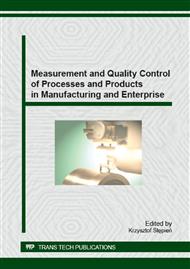p.1
p.7
p.13
p.21
p.27
p.37
p.45
p.57
Participation of Accredited Laboratories in Proficiency Testing Schemes and Interlaboratory Comparisons
Abstract:
This paper presents the elements of metrology laboratory accreditation for calibration in the scope of calibration E-05 Dimensions, and calibration for the subject: the distance and angle measures. During the accreditation, but also in its maintenance, calibration laboratories must prove their competence. Each laboratory must have the quality management procedures for monitoring the validity of the calibrations performed. This monitoring shall be planned and reviewed through: internal quality control, participation in the interlaboratory comparisons or proficiency testing schemes, repeated calibrations using the same or different methods, re-calibration of the saved samples and correlation of results for different characteristics of the sample. According to the ISO/IEC 17025:2005 standard, competence is proved by participating in interlaboratory comparisons or participation in Proficiency testing (PT) schemes. This paper aims to stimulate discussion and debate about ways of proving competence of calibration laboratories. We believe that, in the interpretation of ISO/IEC 17025, the laboratory can demonstrate competence by participating in any activity, PT schemes or interlaboratory comparisons, and they are equal to this need. The procedure and the results of the interlaboratory comparisons between two accredited laboratories will be described.
Info:
Periodical:
Pages:
13-20
Citation:
Online since:
February 2015
Authors:
Price:
Сopyright:
© 2015 Trans Tech Publications Ltd. All Rights Reserved
Share:
Citation:


